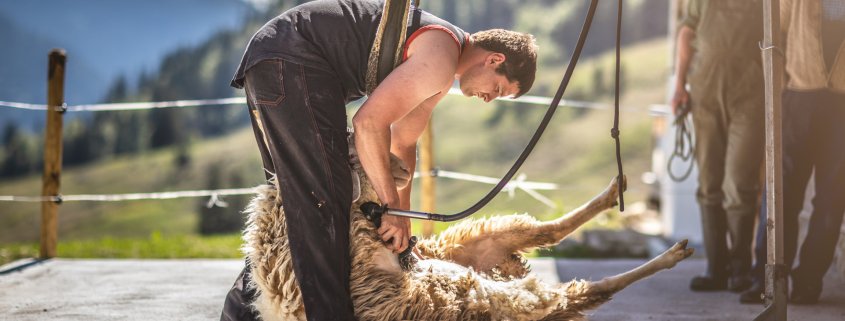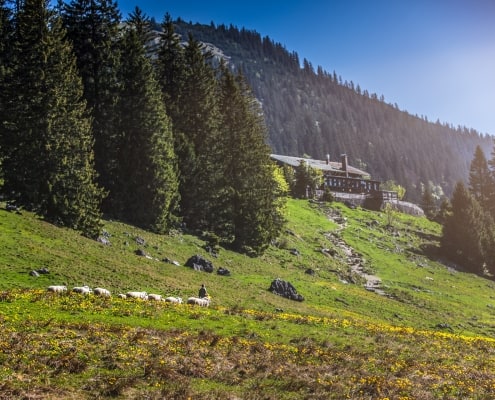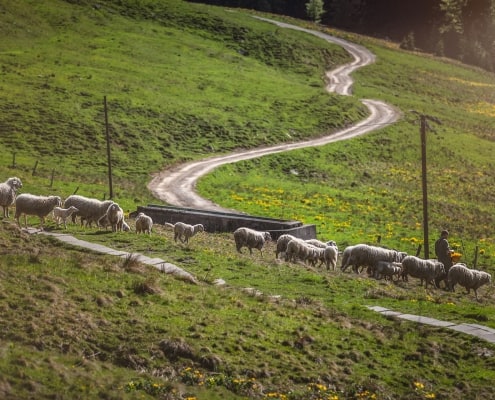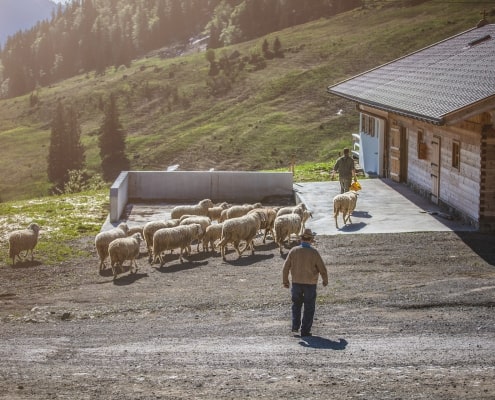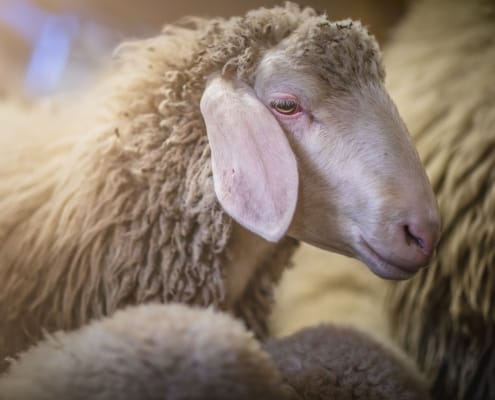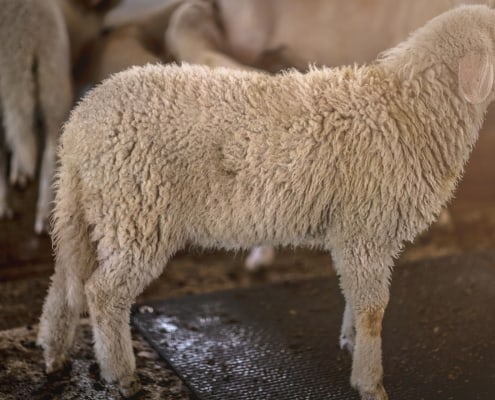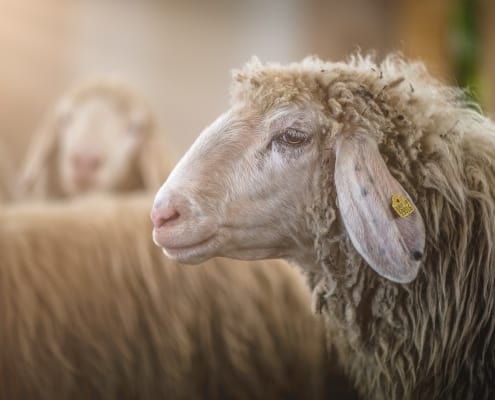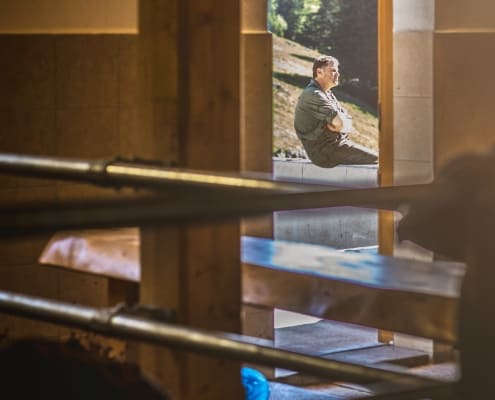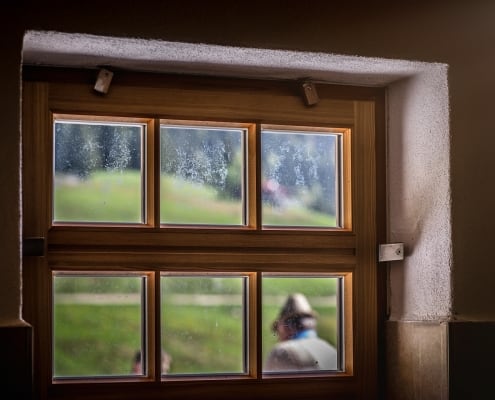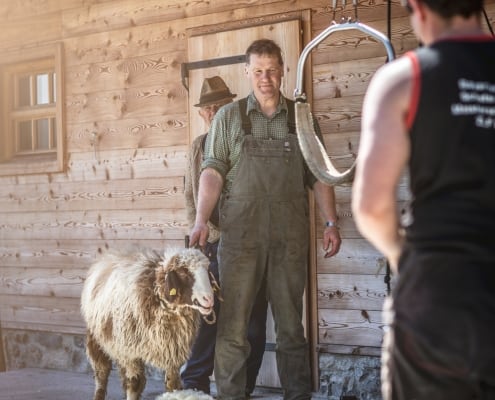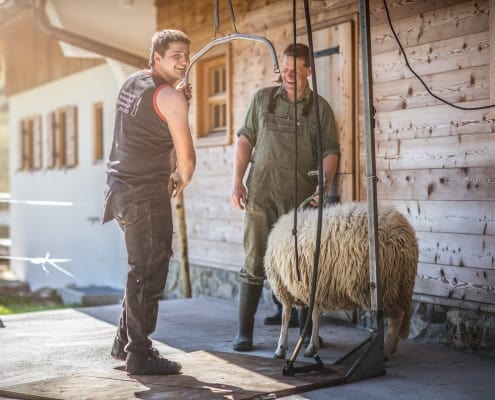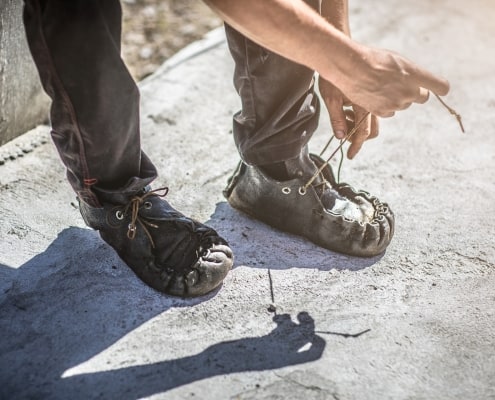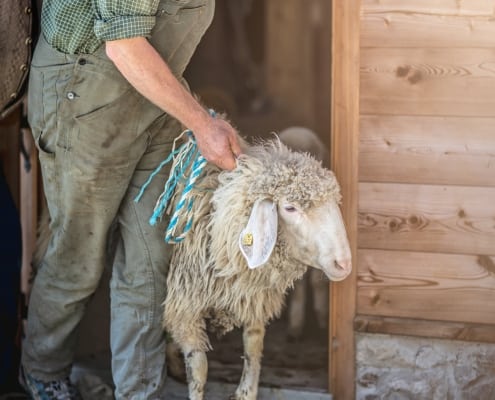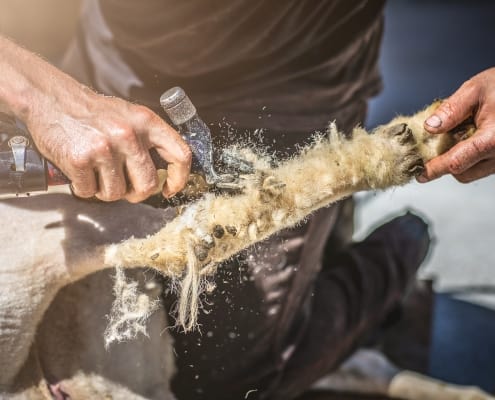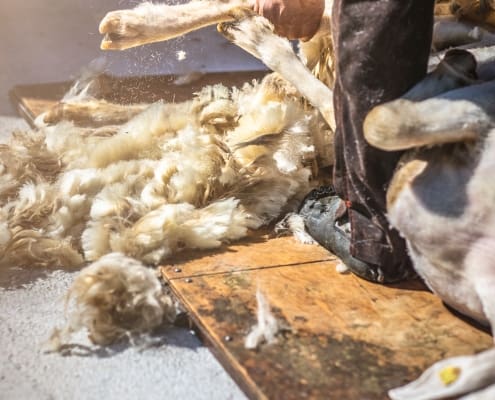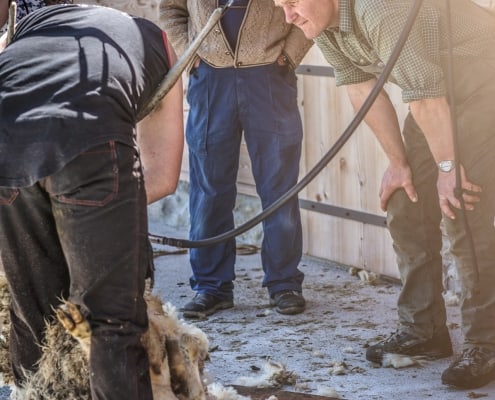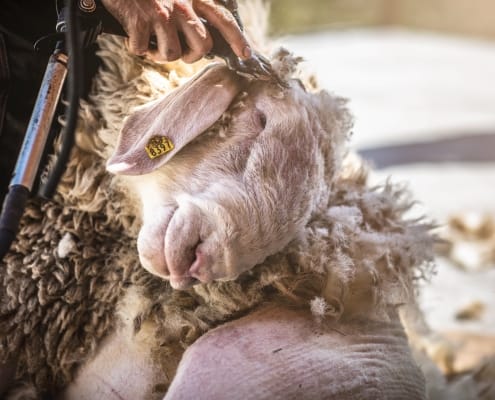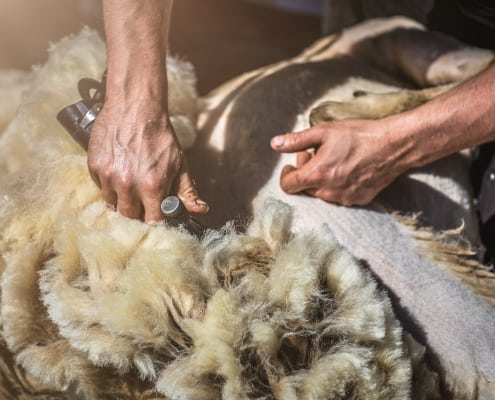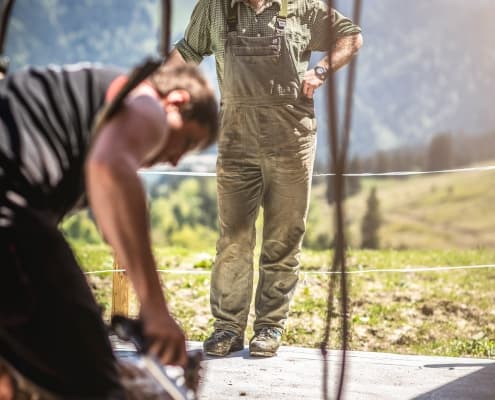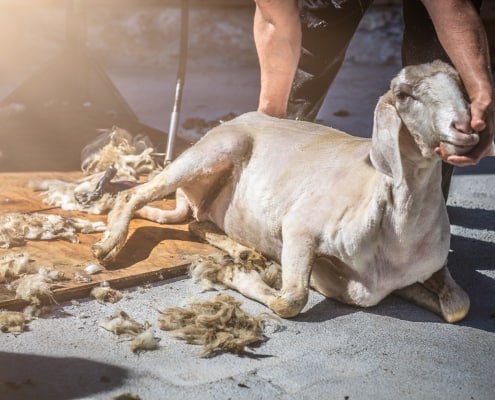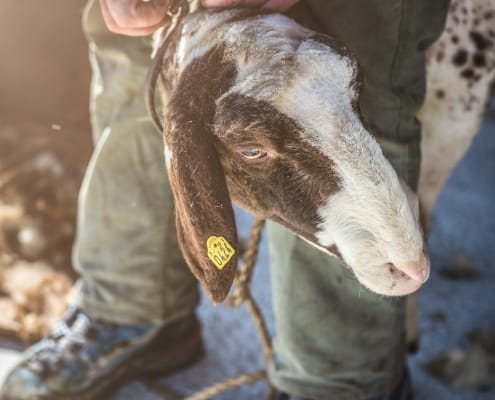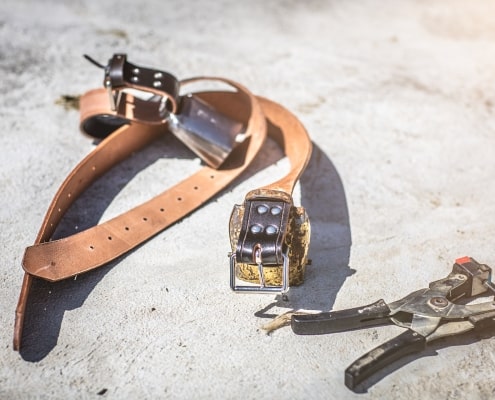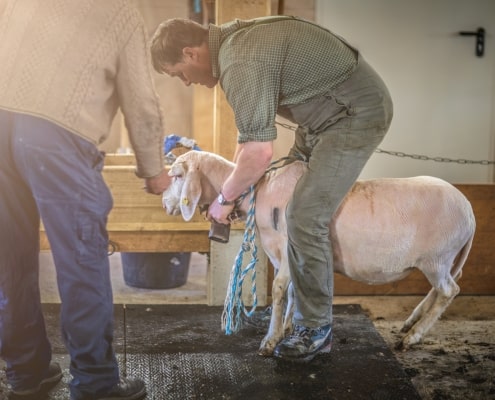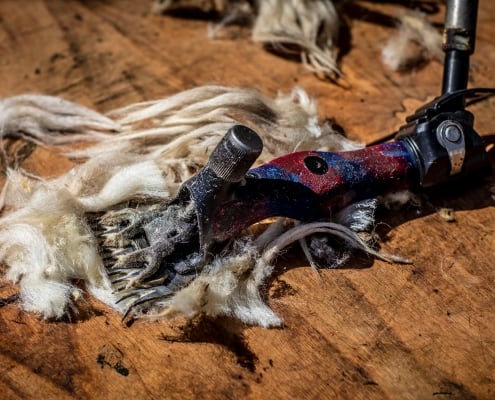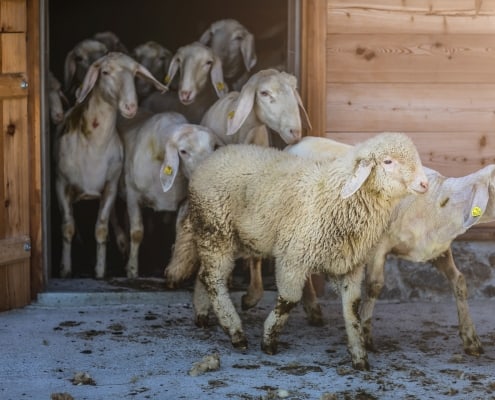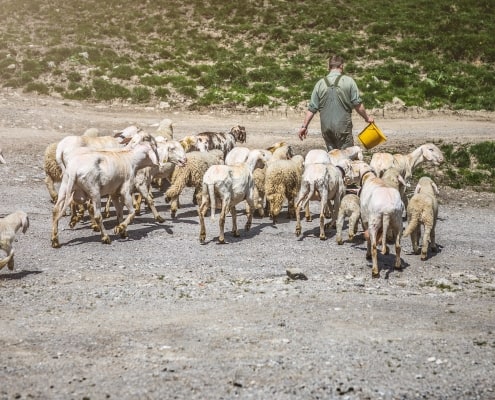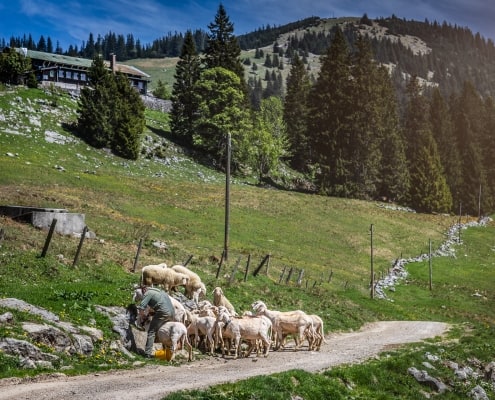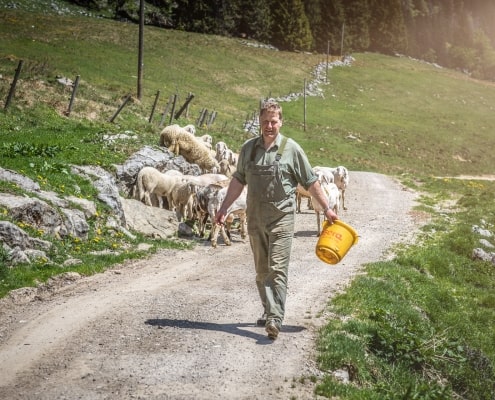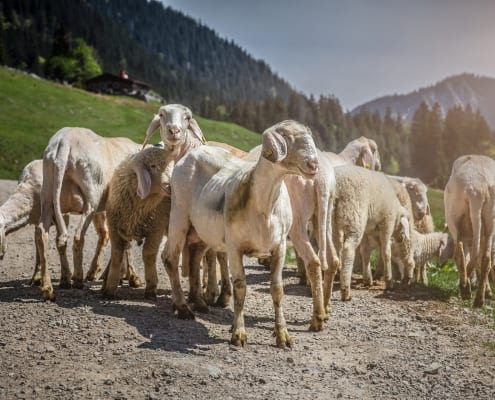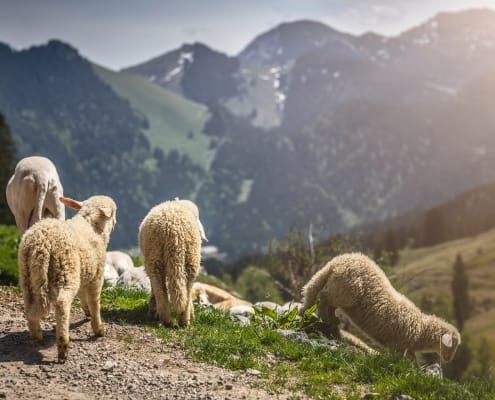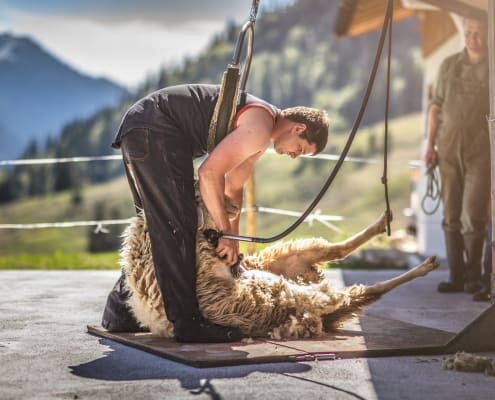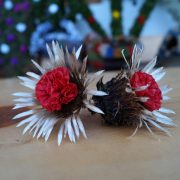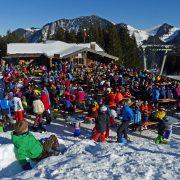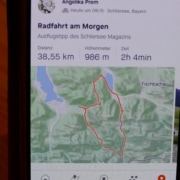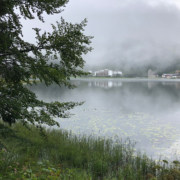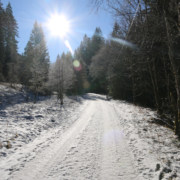Sheep Shearing Time in Schliersee
We arrived bright and early on the mountain. Its surface, still dotted about with the last of Winter’s heavy snow with golden spring blossoms carpeting all the sunny patches. The air was fragrant with alpine herbs carried about on the breeze. The only sounds that greeted us was a lone Cuckoo bird calling out the hour.
It is still early in the season for the cows to make their long climb up and no animals except a few high climbing mountain goats were visible with the naked eye. We stood intently scanning the mountain and trees, looking for the guests of honor for our visit today. We had made the trip up to Firstalm on Spitzingsee with our local farmer, Hartl Markhauser of Anderl bauerhof. We were invited to watch an itinerant sheep shearer work his magic on Hartl’s small herd.
Armed with nothing other than a pail of molasses scented sweet mash and his particular cattle call, he brought out from the shady tree cover up near the craggy peaks, his herd of 20 sheep. What a sight for sore eyes they were, prancing about both young and old. A brilliant flash of white, (and a particularly special speckled brown and white called “Spot” of course), on the pale green and yellow flower dotted meadow. The Bavarian White Mountain Sheep or Bayerische Weißes Bergschaf are a local breed. The rams weigh about 80 to 100 kg and the ewes weigh 65 to 75 kg. The breed was developed by breeding local sheep with Bergamasca and Tyrol Mountain breeds. They are a dual-purpose sheep meaning they can be bred for both their wool as well as for eating.
In what seemed like a timeless manner, one by one the sheep bounded happily behind Hartl, right down the mountain and directly into his beautiful newly constructed Alm. On this day, Hartl had hired a young professional sheep shearer to give his herd a spa day, or at least that was my own personal interpretation of events.
The Sheep Shearer, or Schafschärer in German, trained in New Zealand, exuded confidence. He deftly began setting up his shearing station outside of Hartl’s barn. The nervously excited sheep could be heard “discussing” what was possibly going on outside. The Shearer’s equipment had a purpose for everything, from his clipper blades which he described as “Bone Sharp” to the lanolin impregnated leather moccasins he wore on his feet. Being just one of only twenty Sheep Shearers in Bavaria he has gained a lot of experience in the past 6 years he has been doing this as a part time job. Even though Hartl knew his flock was in great hands he kept a watchful eye on each and every sheep, whispering soothing words, like a proud papa.
Inside the cozy stall, the little herd huddled together completely aware as animals always are that something big was about to happen. Animals, just like people, generally don’t enjoy being interfered. Just like with children though, there are times when you must step in and do what is best for their heath and general wellbeing. It is during these grooming sessions that old, worn, or lost bells are replaced, ear tags checked and hooves trimmed. All is accomplished quickly with great efficiency.
A professional sheep shearer, who has honed his skills and has a silent confidence, can make all the difference. The sheep could just relax and submit to the process. I am not saying every animal was happy about the experience but again this is where having a professional comes in handy. Each sheep was quickly relieved of their wooly coat and tucked safely back into the herd inside the barn. It seemed like each sheep took only minutes and then suddenly Hartl, bucket of food in hand once more was leading them back up to the peace of the blooming alpine meadow.
As a footnote, I would like to say a warm thank you to my friend and colleague Ulrike McCarthy for extending and invitation to me to join her and Hartl on this amazing experience.
To visit Anderl Bauerhof for yourself:
http://anderlbauer.schliersee.de
American artist, photographer and professional wanderer who, after 20 years of roaming, put down roots in a 100 year old Bavarian farmhouse and fell in love with the Alpine village and its residents (both 2-legged and 4-legged).

